Jump to:
S = Substitute
C = Combine
A = Adapt
M = Modify
P = Put to another use
E = Eliminate
R = Reverse
In 1971, Bob Eberle released a book called SCAMPER: Games for Imagination Development. The creative technique he described there has since been of huge value to people called on to generate new and innovative ideas. In this episode, James Schramko breaks down the SCAMPER technique and how you can apply it as an entrepreneur.
Podcast: Download (Duration: 10:40 — 10.0MB)
Get Notified Of Future Episodes Apple Podcasts | Spotify | Amazon Music | Android | Blubrry | Gaana | TuneIn | Deezer | Anghami | RSS | More
In the podcast:
02:20 – What can you replace?
03:46 – Consider combinations
05:04 – Learning to adapt
05:46 – When change is good and bigger is better
06:29 – What else is it good for?
07:21 – Is there something you can remove?
08:04 – Upside-down and inside-out
Let me coach you to business success when you join JamesSchramko membership
Today, I would like to share with you the concept of the SCAMPER technique. Using SCAMPER, you can come up with fantastic business ideas with a very simple process. I used this technique early on in my online career to come up with an incredibly creative bonus that helped me sell website software, and it gave me an advantage. I was able to come to the market and fairly quickly dominate using the SCAMPER technique.
So what is the SCAMPER technique? SCAMPER is an acronym, representing seven prompts for you to consider an existing object in order to come up with new possibilities. In other words, it’s a creative thinking technique.
S stands for substitute, C for combine, A for adapt, M for modify or magnify, P to put to another use, E to eliminate, and R to reverse. We’re going to explore each one of these in more detail.
As an entrepreneur, you’ll often find the requirement to come up with creative ideas, whether it’s for existing products that get stale, whether you want to add a new service to your business, or if you’re just looking for innovation. And innovation is one of the two things that you need for business success, according to Peter Drucker. He was very keen on innovation and marketing. So in such cases, it’s really good to have a framework to go by to make your brainstorming so much more productive, and overcome some of the sticking points that would hinder you getting ahead.
To apply SCAMPER, you simply take your existing product, service or process and you use that as a starting point. And by yourself or with the collaboration of others, you ask questions about your starting object based on the seven areas indicated in the acronym.
So let’s break these down into more detail.
S – Substitute
S for substitute – what can you take away from the object and replace with something else? Might be a physical property, a step in the process, or someone involved, an attitude towards the object. Some simple questions could be, can you use other materials or ingredients? Can you make it look, smell or feel differently? Can the time or the place be replaced? Can someone else do the task? Can it be sold someplace else or to a different consumer?
The classic example here is Vegemite, which is a black spread that people put on their toast in Australia. It came from the English Marmite and is actually the by-product of the brewing process to make beer. But they said, hey, this gooey stuff that we use to make beer, we’re left over with, why don’t we just stick it on toast? Hey, it’s a great source of vitamin B.
Can part of the process be substituted to improve the outcome? Or could a change of attitude or feelings toward an existing product improve sales?
Here’s another example – by offering a product, say a laptop, in different colors, you can appeal to different customer tastes. Remember those iMacs from Apple? They’re all different colors, like that tangerine orange, there was a green one and blue one. They appeal to different buyers.
“Combining two objects can result in something fresh and exciting.”
C – Combine
C is for combine. Combining two objects can result in something fresh and exciting that functions better than either object on its own. Consider taking your base product, service or process and merging it with some other element that will improve the original. Some things you can ask are: would combining this product or service with something else give it extra value? What purposes or objectives can be combined? Can talents and resources be combined for better results? Can two steps of a process be combined? Will combining activities make them more effective or save resources?
Here’s an example: bundling several info products with a subscription membership and some coaching could result in a fantastic business that you can charge a higher rate for.
That’s actually simpler to understand for customers and it gets them a better result in much the same way as SuperFastBusiness Membership is the combination of multiple elements that come together to create a fantastic offering to help business owners become more profitable.
If you want to find out more about that, check out the home page at SuperFastBusiness.com and take a short quiz so that we can see how I can help you the most.
A – Adapt
A for adapt. Consider adapting or adjusting your product to serve a purpose other than originally intended. Look to similar solutions to generate ideas you can borrow and incorporate. So some questions you might ask: What else is like this in the market? Is it similar to something in a different context? What features can you copy from other sources? Are there new ideas outside your field that you can use to enhance your product, service or process? Is there another market situation that you could adapt the object to?
For example, if your e-commerce site is not already mobile-friendly, adapting it for mobile viewing will greatly extend the reach of your business.
M – Modify/magnify
Modify or magnify. Changing some quality of an object or magnifying parts of it can enhance its perceived value or improve its function. Here are some things to consider: can you change a feature or step of a process, product or service to improve it?
Will adjusting the physical qualities of an object give it more value? What aspects of the object can be highlighted or emphasized? Can you increase the size, duration or pricing of an object? Can frequency be increased?
Here’s an example – by making a service subscription-based, you can increase the frequency of payment and make your business far more sustainable with predictable cash flow.
“Who else can benefit from your product?”
P – Put to another use
Put to another use. Existing products or processes may have other possible applications for which you are not currently using them. Consider what those might be and whether you can use your object for those purposes to the advantage of your business or of other people. Think about this: Who else can benefit from your product? Can people outside your target market use it? Are there other problems your product or process can solve? Would the same product work as well somewhere else? Does it create by-products that can be made useful? Could it be modified to suit another purpose?
Here’s an example: When asked to be a guest on someone else’s podcast, you might record your half of the conversation, have it summarized into key points and then you use that as material for your own podcast.
E – Eliminate
E liminate. Streamlining a product or process by removing excess elements can improve function, increase efficiency and result in more elegant or innovative solutions. Ask these questions: how can this be simplified? What parts are non-essential to its function? What features can be de-emphasized or removed altogether? Can it be made smaller? Should it be split into different parts? How can you reduce the cost, the time or the effort?
Here’s an example: Apple products are admired for the pared-down simplicity of their design. Take for instance the one-button iPad or the buttonless mouse.
R – Rearrange/reverse
R earrange or R everse. What if part of the product or process was reversed, done in another order or made in a different orientation? Dare to consider things upside-down, interchange components, backwards or inside-out, just different from what you’re accustomed to. Here are some questions you could ask: can components be interchanged? Can patterns or layouts be switched? What other order can you use? What if everything was reversed? Can schedules be modified? Would another arrangement be better? Can people exchange roles? How can you achieve the exact opposite effect of something? I really liked that one. Quite often I’ve asked, “What would I do if I wanted the opposite effect?” and sometimes an answer is revealed.
Scamper example: Uber has turned the way people get a taxi ride on its head. Instead of searching for a taxi, they simply have the ride come to them.
Now when I was using SCAMPER method, it’s really important to do one thing in particular. Aim for quantity of new ideas first over quality. Just let them flow. Put a timer and write down as many ideas as you can and then the second step would be to analyze the results afterwards. Don’t have any thought to it as you’re coming up with the ideas. Just continue generating ideas as fast as you can and get as many as you can.
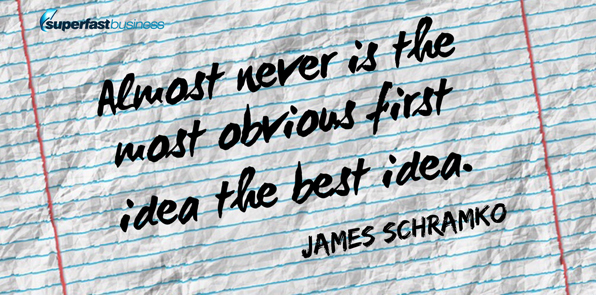 The key to design is to have a lot of new ideas to choose from to start with and almost never is the very most obvious first idea the best idea. It almost never happens. Further develop those interesting ideas that seem practical or feasible and start your prototyping, and go with low-resolution prototypes.
The key to design is to have a lot of new ideas to choose from to start with and almost never is the very most obvious first idea the best idea. It almost never happens. Further develop those interesting ideas that seem practical or feasible and start your prototyping, and go with low-resolution prototypes.
If you’ve enjoyed this, have a look at some of the other podcasts we have. If you’re not already a member, consider applying to JamesSchramko Membership, where I would love to coach you and help you grow your business. Please comment below the episode and let me know, how have you used SCAMPER to accelerate your business?
Liked the episode? Leave us a review on Apple Podcasts
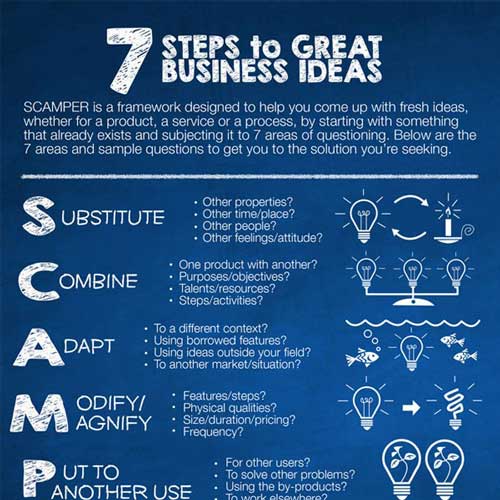
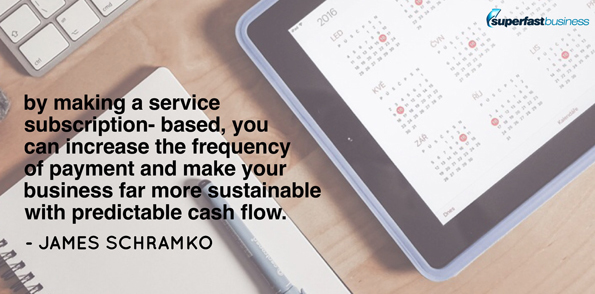
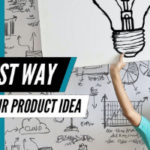

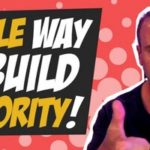






I Liked SCRAMPER model. It sounds very interesting but I have a very obvious and simple question. Will all your material, books, podcasts and everything else help me if I don’t have a business yet ? I have worked for corporations my whole life and now at 58 I am trying to come up with a business and live from that. But I really don’t know what kind of business should I have. 😬